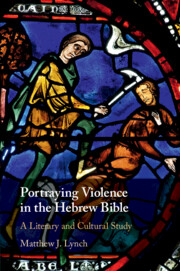Book contents
- Portraying Violence in the Hebrew Bible
- Portraying Violence in the Hebrew Bible
- Copyright page
- Publisher’s note
- Dedication
- Contents
- Acknowledgements
- Abbreviations
- Introduction
- Part I Violence and Ecology
- Part II Violence and Moral Speech
- 4 Violent Deceitfulness in the Scheming Heart
- 5 The Violence of Arrogant Speech
- Part III Violence and Justice
- Part IV Violence and Impurity
- Conclusion
- Appendix
- Bibliography
- Index
4 - Violent Deceitfulness in the Scheming Heart
from Part II - Violence and Moral Speech
Published online by Cambridge University Press: 06 May 2020
- Portraying Violence in the Hebrew Bible
- Portraying Violence in the Hebrew Bible
- Copyright page
- Publisher’s note
- Dedication
- Contents
- Acknowledgements
- Abbreviations
- Introduction
- Part I Violence and Ecology
- Part II Violence and Moral Speech
- 4 Violent Deceitfulness in the Scheming Heart
- 5 The Violence of Arrogant Speech
- Part III Violence and Justice
- Part IV Violence and Impurity
- Conclusion
- Appendix
- Bibliography
- Index
Summary
Chapter 4 addresses the deceitfulness of violent speech. The psalmist reflects deep anxieties about the persistent scheming of the wicked. According to many psalms and proverbs, scheming is the constitutive quality of violent acts. More than the swinging club or shooting arrows of the wicked, it is their speech that occupies many biblical writers. I suggested that in poetic and wisdom texts, scheming is often considered part of the act of violence itself. The preoccupation with scheming reflects how biblical writers thought about the problem of violence (it is deceitful and often begins with speech). I argued that scheming was not simplistically prior to ‘real’ physical violence. Rather, it described a form of violence that afflicted the godly, and was something from which the petitioner sought protection. The concern with scheming enemies also reflects a desire for divine intervention before violence achieves its full effect. Finally, the concern with the enemy’s verbal scheming highlighted the re-expressibility of violent acts. They could be re-enacted in prayer as a provocation for God to act.
- Type
- Chapter
- Information
- Portraying Violence in the Hebrew BibleA Literary and Cultural Study, pp. 101 - 119Publisher: Cambridge University PressPrint publication year: 2020

